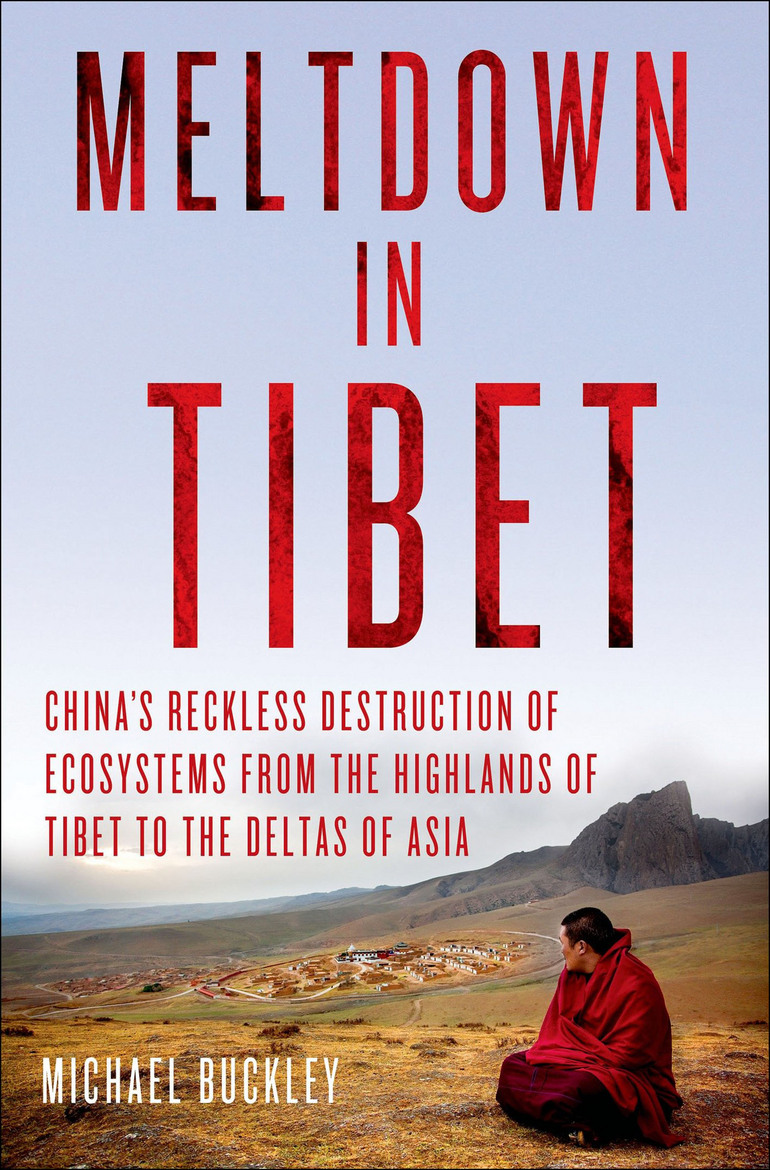
High Peaks Pure Earth presents a guest post by Jonathan Mirsky, a book review of “Meltdown in Tibet: China’s Reckless Destruction of Ecosystems from the Highlands of Tibet to the Delta of Asia” by Michael Buckley, to be published in November 2014 by Palgrave Macmillan.
Thank you to Jonathan Mirsky for contributing this book review. Jonathan Mirsky is a journalist who went to Tibet six times between 1982 and 1988. He is a regular contributor to the New York Review of Books. Read his other book reviews for High Peaks Pure Earth here: http://highpeakspureearth.com/category/book-reviews/
“Meltdown in Tibet: China’s Reckless Destruction of Ecosystems from the Highlands of Tibet to the Delta of Asia”
By Michael Buckley
In our age of decolonisation and environmental protection, China has created in Tibet what Michael Buckley calls the world’s largest colony. He wonders, “Is environmental horror China’s greatest export?” China not only exploits the local environment in every possible way, he contends, but also threatens the environments and livelihoods of countries like India, Vietnam, Cambodia, Laos, and Burma.
An intrepid environmentalist and travel writer – his “Lonely Planet” volume on Tibet is unique – Mr. Buckley provides in his latest book an impassioned and angry account of China’s rape of Tibet and its people.
His passion is strengthened by telling details. These make the book’s thesis of destruction and heartlessness extra-convincing. Here is one: Mount Kailash is one of Tibet’s sacred mountains; believers regard it as a place to be walked around, in two or three days for all but the hardiest pilgrims. A plan is now underway to pave the sacred path so that some of the hundreds of thousands of Chinese tourists to Tibet, for whom Kailash is a happy-snapper’s dream, will be able to circle it in a bus in a few hours.
I have written rape and I meant it. Despite the objections of Tibetans on religious grounds, as Mr Buckley shows, China has penetrated Tibet’s ground waters, and its deep-lying minerals, and violated its mighty rivers and grasslands. It has removed from their traditional surroundings two million nomads, whose way of life protects the grasslands, slaughtered their domestic animals, and driven to extinction the wild asses, gazelles, and deer that not long ago wandered those spaces, which have been given over to growing grain for the hungry mainland.
An adventurer who rafts down Tibet’s imperilled rivers to feel their power, Mr Buckley is also an up-to-date techno-geek. The Chinese authorities keep much of their rape-developments away from prying eyes like Mr Buckley’s. But he managed to gaze down on the mining operations from the Google Earth satellite, 250 miles up. Now he could see the mining sites, their “pollution discoloration, and tailings storage ponds with toxic sludge. “ Beijing objected to Google Earth’s far-seeing eyes, but having tossed Google out of the country their objections were ignored.
China calls Tibet Xizang, “ Western Treasure House,” and Tibet is indeed stuffed with rare earths and minerals. Take lithium, “the metal of the moment.” One third of the world’s lithium is in Tibet. Lithium carbonate is extracted from the region’s salt lakes, and is used in batteries for electric vehicles. Warren Buffet, one of the planet’s richest men, is now a shareholder, and at a ceremony launching one of his investments was “presented with ‘katas’, (ceremonial scarves) by Tibetan women in full costume.” But as Mr Buckley puts it with his usual punch, “The Chinese dream it would seem, is to get wealthy. Tibetans do not dream about driving cars powered by large lithium batteries. They dream about the return of the Dalai Lama”.
One of the main factors in the destruction of Tibet’s way of life is the railway that came into operation in 2006. Mr Buckley rightly calls it a “game-changer, fast-tracking the destruction of Tibet’s environment. “Now Han tourists and workers in their hundreds of thousands can travel from Beijing to Lhasa in two days, compared to the three-day truck ride from Golmud to Lhasa I took 30 years ago”.
“The railway is the first megaproject in Tibet …and has enabled large-scale exploitation of Tibet’s resources…. The railway is Beijing’s opening salvo in the Open-up-the-West campaign, which got underway in 2000. This is more of a Plunder-the West campaign…”
Mr Buckley does not exaggerate when he discerns the hand of Mao Zedong in what is happening in Tibet. The Chairman believed nature to be an enemy to be vanquished, an exact contradiction of the respectful Tibetan attitude. This was born out in Mao’s time by the disastrous campaign to kill sparrows, which led to a nation-wide plague of destructive insects. Worse still was the Great Leap campaign in agriculture resulting in the world’s worst-ever famine, during which 30 to 50 million Chinese starved to death. “Mao’s arrogant legacy, “ writes Mr Buckley,” lingers today with the leadership of the military-industrial complex that rules China.”

One of the recent contradictions in Han attitudes towards Tibet is the awe of many younger Hans to what they see as Tibetan mystery and purity. They visit holy sites such as Lhasa’s Jokhang, where, described by Mr. Buckley, they chatter and smoke (and, as I recall, walk the wrong way) while photographing the sacred images. Now there is a lively industry in bottled “5100 Tibetan Glacier Water,” a product served on China’s high-speed trains and to first-class passengers on the country’s main airline. In Beijing it is drunk at official banquets and Party anniversaries.
In my mind’s eye I see a newly paved highway around Mount Kailash, where Chinese and foreign tourists in air- conditioned buses glide around the sacred way in a few hours while drinking “5100 Tibetan Glacier Water.”
“Meltdown in Tibet: China’s Reckless Destruction of Ecosystems from the Highlands of Tibet to the Delta of Asia” By Michael Buckley
Published by Palgrave Macmillan
Buy the book on Amazon here: http://amzn.to/1xYjcx8





Follow Us!